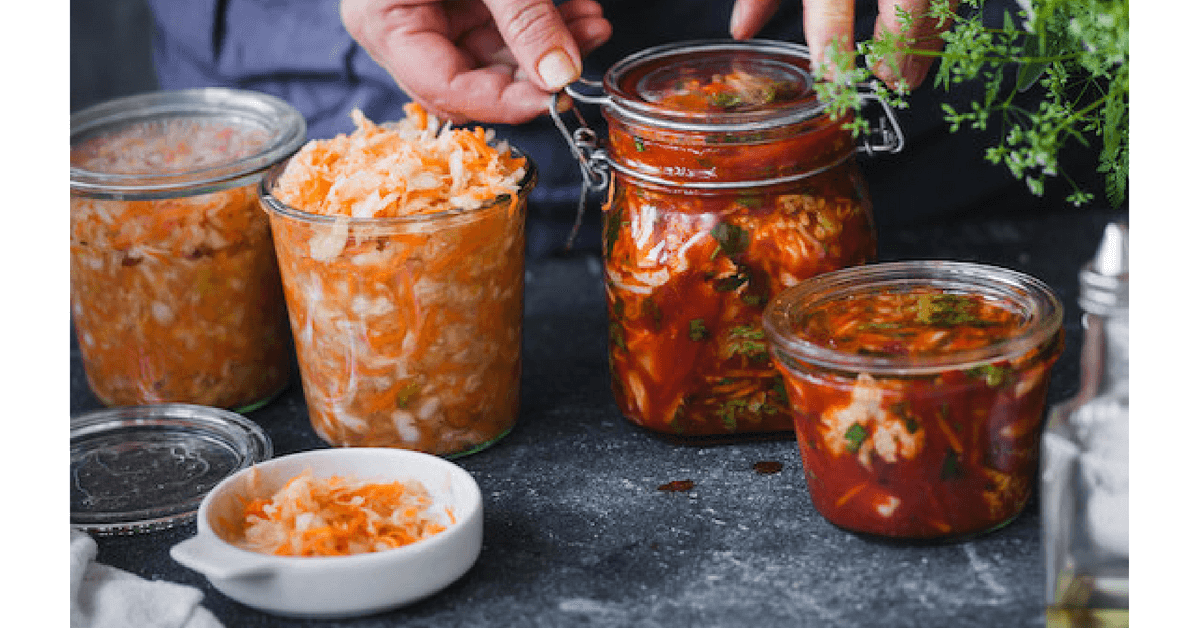Fermenting food has been around since Neolithic times when there were no fridges. It’s a way of preserving food, that has many other health benefits besides preservation.
The term fermentation comes from a Latin word meaning to “raise” or “bubble.”
As the process of fermentation starts, are created and food is transformed into “power food.”
In a sense we are all like starter cultures, bubbling our enthusiasm for life and health within our homes and communities.
8 Benefits of Fermented foods:
- More nutrients. When food is fermented, enhanced nutrition is generated, such as higher amounts of very bioavailable (more useable by your body) B vitamins within fermented veggies such as fermented pickles, okra, beans, cabbage and even spices can be fermented and used on food and even non-GMO popcorn.
- Cancer fighting compounds. Fermenting generates isothiocyanates in food, which are anti-carcinogenic (cancer killing) healthy substances like normally found in broccoli family foods.
- Healthy acids. Fermented food produces healthy organic acids that “seed” a healthy gut microbiome (organ of gut bacteria that signal our immune system and hormones in healthy ways.)
- Healthier microbiome. Increased bacterial biodiversity (fermentation gives us many kinds of healthy bacteria) creates a healthy gut immune system. 70-80% of our immune system is in our gut.
- Healthy mood signals. Increased gut bacterial biodiversity seeds the gut microbiome to create healthy neurotransmitters like serotonin and send “feel good” signals to our brains.
- Immune boosting. Diverse gut bacteria develop an ‘in-unison” signaling system called quorum sensing that our immune system in the gut to defend us and to contribute to our authentic “gut” feelings of what’s right and wrong in our lives. In this way, diversity of the microorganisms that we eat, develop a unified voice to help keep us healthy.
- Flavor. Fermenting foods creates robust flavors.
- Reduced antigenicity. Fermenting breaks down large proteins into smaller amino acids, which have less allergic potential. Often a food you are allergic to in the larger protein form can now be consumed without adverse reactions in the fermented food form.
You can “ferment” almost any food. All veggies, okra, green beans, cabbage, leafy greens, celery, zucchini, cheese, salami, olives, herbs and even pickles.
Many commercial products that claim to be fermented, and which are either pasteurized or made by merely adding vinegar without going through the true fermentation process, do not give you the health benefits we are discussing.
Fermented foods are safe. According to the US government (that has a department dedicated to these foods), have published that there is no documented case of toxicity from consuming fermented plant foods.
Canning on the other hand, which destroys healthy bacteria in food, is famous for toxicity and danger from Botulism. Botulism got its name from sausage because fermenting animal foods is trickier and can be potentially more toxic, while fermenting veggie foods does not have this issue.
Bacterial confusion. In the US advertising and commercialism have initiated a “war” on bacteria making many homemakers excessively concerned about eradicating them. But healthy, diverse bacteria is good for us and consuming diverse fermented foods such as kefir, kombucha, umeboshi plum paste, miso, olives, fermented veggies, gluten-free soy sauce and even, yes, organic grass fed salami, are good for the brain in our guts and in our heads (both brains start out as the same cells in the fetus and divide, one set going to the gut and the other to the head brain) and immune system.
Historical bugs to modern day ones.
Early fermented drinks. The earliest microbial transformations were alcoholic beverages. They were made from very bio-diverse natural yeasts. They contained large amounts of probiotics. When King Henry served wine at his table or the servants drank it at theirs, they were getting “yogurt-like” benefits from their wine and mead.
Early bread. Ancient bread was made from diverse yeasts that made the bread more of a probiotic source. These multiple organisms altered the gluten, reducing it’s toxicity! Ancient bread had less gluten, less toxicity and of course, less Roundup.
Present day differences. Today, single yeasts are used commercially to make both alcoholic beverages and bread, which nullifies the probiotic component of these. This also contributes to glutens (family of 200 related storage proteins) in bread becoming more concentrated and thus, more dangerous to our health.
The Human Microbiome Project set up by the US government to study bugs that dwell inside human nooks and crannies revealed:
- We have inside us 10 times more bacterial cells that our own cells.
- We co-exist with bacteria.
- We just need to keep them healthy.
Healthy goal.
- Consume some fermented food at least once a day if not twice a day.
- Vary the forms that you eat from sunflower seed yogurt to fermented veggies to a dash of umeboshi plum paste on avocado or inside your scrumptious raw veggie, vegan sushi or a serving of low-sugar kumbucha beverage or a warm glass of miso with your meal.
- Use them with the foods you already eat. For example, I enjoy mixing a dash of umeboshi plum paste with mustard on my turkey gluten-free sandwiches.

